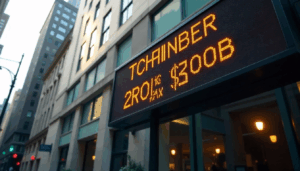“Majority of Crypto Tokens Are Headed to Zero, Says Fund Manager””Fund Manager Predicts 99% of Cryptocurrencies Will Become Worthless”
Crypto fund managers are capitalizing on trading strategies that traditional finance abandoned over a decade ago, making this an opportune moment to invest in crypto hedge funds.
Chris Solarz, Chief Investment Officer of digital assets at Amitis Capital, a firm specializing in crypto fund-of-funds allocations, believes the current landscape is highly favorable for hedge fund investments in crypto. “This is the golden age for crypto hedge fund investing,” Solarz told CoinDesk, emphasizing the sector’s potential and the scarcity of experienced money managers.
Despite the evolution of financial markets, crypto remains young enough for hedge funds to employ strategies that were commonplace 35 years ago in traditional finance (TradFi). While the number of hedge funds in TradFi has exploded from 127 in 1990 to over 10,000 in 2024, managing nearly $5 trillion in assets, the crypto hedge fund space is far less saturated. Currently, about 1,650 crypto hedge funds manage approximately $88 billion, offering significantly less competition for skilled managers.
Solarz argues that the lack of competition allows experienced fund managers to use older, once-effective trading techniques that have long been commoditized in traditional markets. “I meet 20 managers, and 19 out of 20 don’t deserve to be running money,” he said. Many of them lack experience, and some merely hold major cryptocurrencies like Bitcoin, Ethereum, and Solana, which investors could buy directly without paying hedge fund fees.
Crypto hedge funds will likely continue to offer asymmetric opportunities until blockchain technology is fully integrated into the financial sector. According to Solarz, this shift could take place over the next decade, potentially aligning Bitcoin’s market capitalization with gold.
No Altcoin Season in Sight
Solarz categorizes funds into three types: venture funds (supporting startups), liquid directional funds (betting on market trends), and liquid market-neutral funds (aiming for returns regardless of price direction). When assessing liquid directional funds, he prioritizes investment strategies, risk management, and repeatability over market-specific theses.
He believes that altcoin seasons, where most cryptocurrencies rise in value together, are a thing of the past. With around 40 million tokens in circulation, Solarz expects 99.99% of them to become worthless. “There are only about 100 worth discussing,” he said. Furthermore, he projects that the crypto market will need at least $300 billion in new capital over the next three years to sustain current prices, as upcoming token unlocks put pressure on supply.
Retail investors have shifted focus toward memecoins, leaving institutional buyers hesitant to absorb the surplus supply. “This is why an altcoin bull market is unlikely anytime soon,” he noted.
Market-Neutral Strategies Remain Profitable
Historically, five times more money has been allocated to crypto venture capital funds than to liquid funds, as venture capitalists can more easily obscure mark-to-market losses. However, Amitis Capital sees greater opportunity on the liquid side, having invested in 14 funds: three in venture capital, four in liquid directional strategies, and seven in market-neutral strategies.
Solarz highlights the difference between institutional and family office investment approaches, stating, “Institutions focus on avoiding losses, while family offices aim to maximize returns.” Consequently, venture capital investments must meet a high bar due to the long-term lock-up periods involved.
Market-neutral strategies remain highly profitable. In December, traders took advantage of arbitrage opportunities in South Korea when political instability triggered panic selling, creating price disparities. Additionally, funds profit from perpetual contract funding rates by simultaneously shorting cryptocurrencies while holding spot positions, allowing them to earn passive interest. Some of these strategies yield consistent double-digit returns.
“These approaches continue to generate strong, stable profits,” Solarz said, reinforcing his belief in the potential of crypto hedge funds in the current market landscape.
Share this content:













